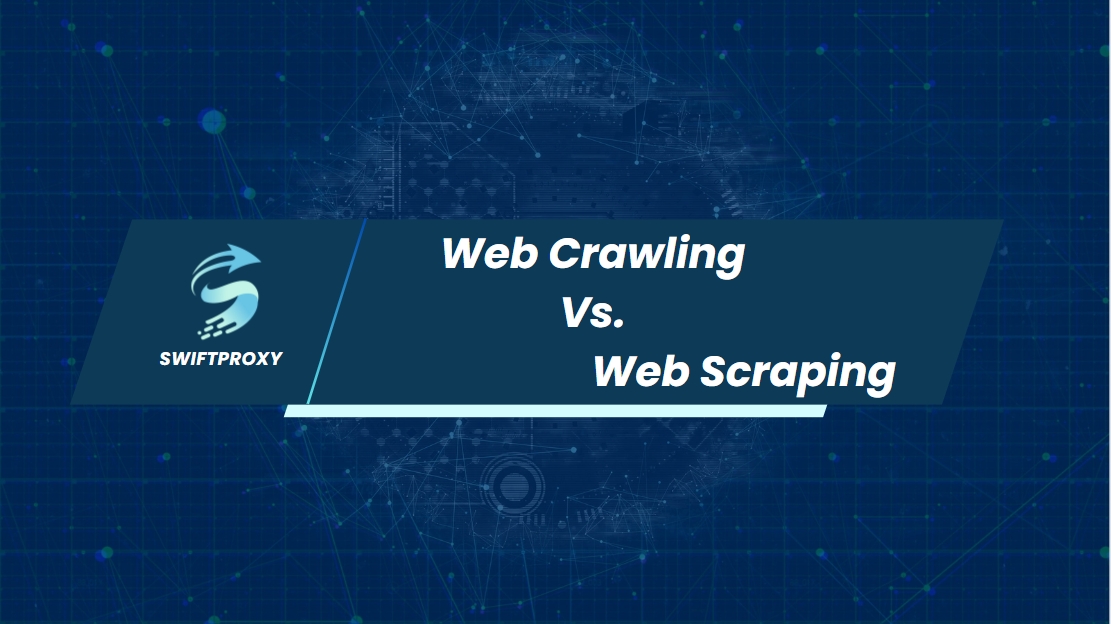Web Crawling Vs. Web Scraping

You may have encountered two terms that are frequently used interchangeably – web scraping and web crawling. While both involve extracting data from the web, it's important to understand their distinct differences if you intend to use each method.
What Distinguishes Web Crawling From Web Scraping at Its Core?
The distinction between web crawling and web scraping lies primarily in their scope of data harvesting. Web scraping is focused on extracting specific online information such as commodity prices, user reviews, or product descriptions. On the other hand, web crawling involves gathering all available data, often in an unstructured format, and systematically traversing through each hyperlink to index the entire website. Now, let's explore their similarities and differences.
How Does Web Crawling Differ From Web Scraping in Terms of Extracting Data?
In essence, web crawling does not discriminate. One of its primary applications is search engine indexing. Search engines like Google and Bing employ web crawlers, often referred to as spiderbots, to systematically explore the World Wide Web and catalog its contents. This information is subsequently utilized to rank websites in search engine results pages.
For instance, Google utilizes spiderbots to navigate through e-shops, review sites, and forums, indexing them to rank appropriately on its search engine. Web crawling also plays a crucial role in academic research that involves big data analysis. However, it is often complemented by web scraping, which extracts specific and relevant information necessary for research purposes. In essence, web scraping frequently accompanies web crawling. More details about Google's web crawling policies can be found in its developers guide.
Both web scraping and web crawling employ distinct tools for data extraction. Scraping tools typically involve some initial manual configuration to retrieve relevant data. Businesses configure these tools to target specific elements within chosen URLs. Conversely, web crawlers are fully automated tools that systematically gather all available information across websites without prior customization. When users require specific data extraction from the extensive dataset gathered by web crawling, they often switch to web scraping methods.
Which Method, Web Crawling or Web Scraping, Is Better Suited for Large-scale Data Collection?
Both web crawling and web scraping are utilized for large-scale data extraction. However, web crawling is typically employed as a primary tool for comprehensively traversing website content, such as for tasks like web archiving that don't require structured data.
Simultaneously, scraping tools often utilize rotating residential proxies to gather specific information from hundreds of targeted websites. While a web crawler navigates through a single website and its associated backlinks, a web scraper is designed to visit numerous specified URLs to extract particular data elements such as HTML headers and CSS selectors.
The choice between web crawling and web scraping for data collection at scale depends on the specific objectives of the data harvesting process. In summary, both methods are effective at gathering large volumes of information, albeit through different approaches.
Key Considerations When Choosing Between Web Crawling and Web Scraping for Your Project
Before choosing between web crawling and web scraping for your project, it is crucial to define your end goal. Start by determining whether you need structured or unstructured data. Opt for customizable web scrapers if you require specific information returned in formats such as .CSV, JSON, or .XLSX. Here are some common web scraping applications:
- Conducting market research
- Comparing prices
- Monitoring competition
- Generating leads
- Analyzing user sentiment
Web crawling tools excel at thoroughly exploring every aspect of a chosen website. While the data retrieved is typically unstructured, it provides a comprehensive dataset that can later be analyzed using scraping tools to refine the analysis scope. Here are several typical use cases for web crawling:
- Ensuring website quality
- Indexing for search engines
- Supporting scientific research
- Archiving web content
- Identifying broken links
While the distinctions in their use cases are evident, both data extraction methods are frequently combined to complement various stages of data analysis, thereby enhancing overall data quality.
Using Web Crawling and Web Scraping Together for Comprehensive Data Gathering
In many cases, crawling and scraping tools are used in conjunction. For instance, when conducting research on digital market trends and initial criteria are broad, crawling tools can explore selected websites to gather all publicly available information. Once the initial stage is complete and analysis criteria are refined, a web scraping tool can then be customized to extract relevant information from the dataset.

















































